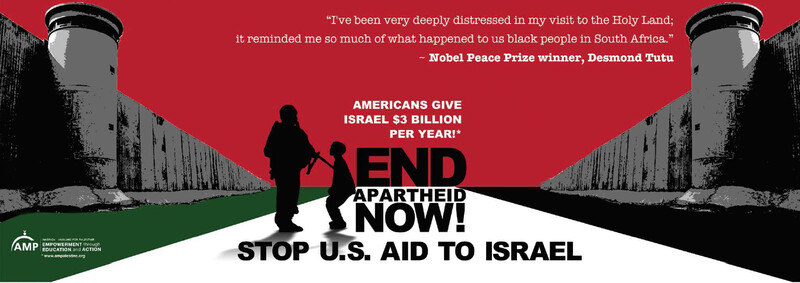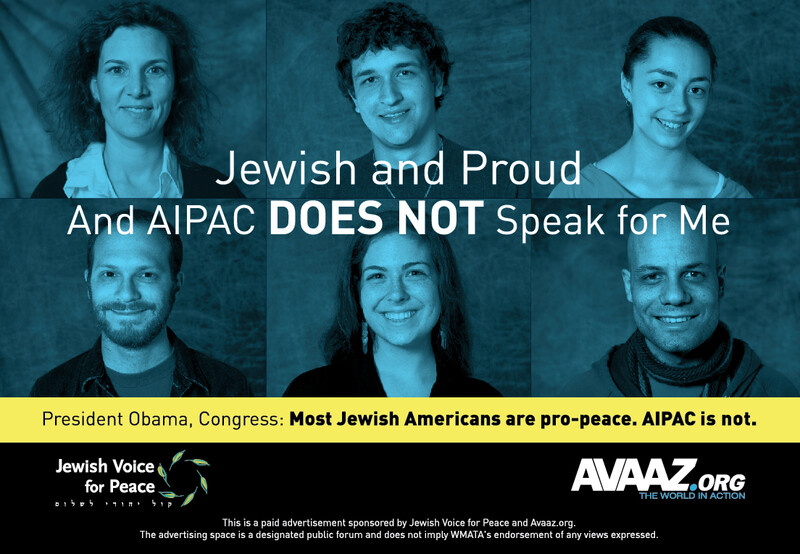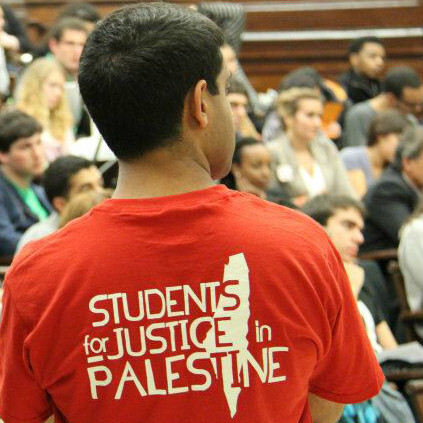Lobby Watch 22 October 2013
The Anti-Defamation League (ADL) yesterday released a list of organizations comprising what it claims to be the “top ten most influential and active anti-Israel groups in the United States.”
“The Top ten anti-Israel groups are the most significant players in the domestic anti-Israel movement today,” said Abraham Foxman, ADL national director, quoted in the ADL’s press release.
According to the statement, the organizations have been selected according to their “ability to organize, sponsor and endorse Boycott, Divestment and Sanctions (BDS) campaigns against Israel; their sponsorship of and participation in anti-Israel rallies, panel discussions or conferences; and their ability to pursue anti-Israel policy initiatives and lobbying efforts against Israel.”
The list is given as follows:
- ANSWER (Act Now to Stop War and End Racism)
- American Muslims for Palestine
- CODEPINK
- Friends of Sabeel-North America
- If Americans Knew/Council for the National Interest
- Jewish Voice for Peace
- Muslim Public Affairs Council
- Neturei Karta
- Students for Justice in Palestine
- US Campaign to End the Israeli Occupation
New additions for 2013
New to the 2013 edition of the list, originally published in 2010, are American Muslims for Palestine (AMP), CODEPINK, Neturei Karta and the Muslim Public Affairs Council (MPAC).

American Muslims for Palestine is described in the full report as “the leading organization providing anti-Zionist training and education to students and Muslim community organizations in the country.” The ADL also notes AMP’s “heavy emphasis on supporting and helping coordinate the activity of anti-Israel college students” and its support for BDS as a nonviolent tool to pressure Israel to comply with international law, including its recent campaign to promote a boycott of Israeli dates within Muslim communities.

CODEPINK activist Midge Potts
The section of the report describing CODEPINK: Women for Peace notes that “some of its initiatives have little to do with the Israeli-Palestinian conflict” but that four of twelve core “issues” listed on its website do pertain to Israel, and that the organization’s opposition to sanctions on Iran is “implicitly hostile to Israeli interests.” The ADL cites CODEPINK’s “often daring attempts to disrupt major pro-Israel gatherings and events” and states that a “core aspect of CODEPINK’s relevance to the anti-Israel movement lies in its connections to the broader left-wing and antiwar movement and its ability to introduce anti-Israel initiatives to these constituencies.”
The addition of the Neturei Karta is odd, in that the ultra-orthodox Jewish sect, whose public criticism of the Israeli state is based on its religous belief that a Jewish state of Israel should not exist until the coming of the messiah, is no more visible or influential within US Palestine solidarity circles than it was in 2010. According to the ADL, the major “threat” posed by the Neturei Karta is that “the average passer-by who witnesses Neturei Karta’s participation at an anti-Israel protest surmises that many Jews who dress similarly agree with this position.”
Thus, much as rapper Jay Z believes that his “presence is charity” for African-Americans, the ADL believes that Neturei Karta’s presence is charity for critics of Israeli policy.
Likely anticipating some degree of surprise at the inclusion of MPAC, whose explicit support for a two-state solution to the Israeli-Palestinian conflict is in line with the official stance of the ADL itself, the press release makes a point of addressing MPAC directly. “Despite MPAC’s positive role in the civil rights, counterterrorism and interfaith communities,” reads the statement, “the group’s involvement in anti-Israel campaigns and its leadership’s consistent use of anti-Israel rhetoric is extremely troubling.” The full report claims that MPAC “has a long record of promoting hostility toward Israel” but suggests that the reason for the group’s inclusion in that list is that the organization “is increasingly partnering with other extreme anti-Israel organizations that advocate for BDS.”
Present absentees
Displaced by these new additions are the International Solidarity Movement (ISM), Al-Awda, the Muslim American Society, and the Council on American-Islamic Relations (CAIR). According to the ADL, the groups dropped from the lists have been removed because they have “for various reasons, scaled down the type of activity that merited their inclusion in the original report.”
Interestingly, the ADL’s Foxman had commented about CAIR to The Jewish Daily Forward only days before the list was published, saying that “time will tell” if CAIR’s recent naming of Jacob Bender, who is Jewish, to lead its Philadelphia chapter would affect the ADL’s stance on the group. The ADL denounced CAIR in a lengthy report in 2006.
Growing strength

A Jewish Voice for Peace ad campaign
JVP responded to its inclusion in the list by reposting an earlier statement responding to similar claims from the ADL. The statement thanks the ADL for its “recognition of our growing strength,” while questioning “the right of the ADL to declare a monopoly on Jewish values” and criticizing the ADL’s record of “fomenting Islamophobia, spying on leftist and human rights groups, denying the Armenian genocide, and surveillance and infiltration against Arab American activists.” The response goes on to state that it was “not a surprise, and even a badge of honor, that the ADL would attack us.”
The US Campaign to End the Israeli Occupation is cited for its role in empowering its member groups: The coalition “provides the platform for its member groups to strategize and interact with each other” and “in many cases, US Campaign is able to provide the infrastructure and organizational prowess that these smaller, more grassroots organizations lack.”

The ADL offers SJP what is arguably the highest praise of all the purported “top ten” groups:
If the university and college environment can be viewed as the incubator for tomorrow’s leaders, SJP’s success at introducing anti-Israel ideologies to today’s college students is enormously significant. Indeed, SJP activists on campus have fought hard to expand the reach of their work and not just “preach to the choir,” using language and rhetoric that appeals to other minority student groups on campus, LGBT [lesbian, gay, bisexual, transgender] people and others.
It is not uncommon for an anti-Israel program on campus to receive the endorsement or sponsorship from six or seven other (non-Israel-related) student organizations. SJP chapters have succeeded in doing this by consistently analogizing the Israeli-Palestinian conflict with other global and domestic issues like the US-Mexico border fence, LGBT rights, immigration and failures of the prison system and doing outreach to other campus groups. Even the divestment resolutions that were introduced at about ten universities in the US in the 2012-2013 academic year received the support of many groups beyond SJP.
SJP chapters have also been effective at expanding their reach and visibility because of their adept use of social media, including Facebook, Twitter and YouTube.
The ADL Answers on ANSWER
UPDATE: An earlier version of this section relied on incomplete and second-hand information concerning the status of ANSWER. I have amended it to focus on the core facts of ANSWER’s changing role in the maturing Palestine solidarity movement.
Like new addition CODEPINK, ANSWER, a coalition originally established by the Marxist-Leninist Workers World Party, is also best known for its involvement in the antiwar movement. The coalition was a major presence in Palestine solidarity movement during the second intifada, organizing a large number of highly visible mobilizations.
Today, ANSWER’s visibility within the US Palestine solidarity movement has been reduced, in part due to the decline of the antiwar movement in general. ANSWER has not been a major presence in the primarily BDS-focused incarnation of the Palestine solidarity movement which began to take shape in the latter part of the 2000s, and its absence from BDS organizing has arguably led to a decline in its influence.
When I posted a tweet expressing surprise that the ADL still considers ANSWER to be one of the top ten “most signficant players” in US Palestine solidarity activism, even in this new BDS-centric context, I received this response from the author of ADL report, Adina Holzman:

Analyzing the list
Beyond the peculiar choices for inclusion and exclusion, the report is riddled with signs of sloppy research and writing. The subheadings describing organizational attributes are phrased differently from section to section. Mahmoud Ahmadinejad is described as if he was still the current President of Iran. The number of “likes” and “follows” enjoyed by each organization on Facebook and Twitter are cited, metrics that any social media professional would laugh at if presented as an indicator of actual influence on those platforms. Neturei Karta, which even a cursory glance at Wikipedia reveals to comprise a multiplicity of factions and branches, is presented as if it were a single entity. The sections devoted to other organizations are filled with factual errors that any close observer would quickly recognize, but which I will not list here.
So what should Palestine solidarity activists glean from all this?
Does the ADL, which successfully infiltrated scores of Ku Klux Klan chapters across the US back during the period when it was still an anti-racist organization, just want Palestine activists to think that its intelligence gathering and analysis has gotten this bad? Or has its intelligence gathering and analysis actually gotten this bad?
The presentation of the report, flawed as it is, may actually distract from the point.
I would argue that it would be a mistake to look to the composition of the ADL’s “top ten” list as a barometer of either the Palestine solidarity community itself or of the ADL’s current intelligence capacity.
Rather, the list presents precisely the image of the Palestine solidarity community that the ADL wishes to popularize among its supporters. The significance of a given organization is more likely to be exaggerated or minimized based on evolving political and strategic criteria than it is to be described based on any form of objective measurement.
The ADL is not interested in accuracy in this type of document. It is interested in publicity, it is interested in pleasing its donors, and it is interested in advancing a clear political agenda with evolving, yet agreed-upon priorities, developed by the increasingly centralized anti-Palestinian advocacy apparatus to which it belongs.
Tags
- ADL
- Anti-Defamation League
- American Muslims for Palestine
- CODEPINK
- Muslim Public Affairs Council
- Neturei Karta
- Jewish Voice for Peace
- Students for Justice in Palestine
- ANSWER
- Adina Holzman
- Jay-Z
- BDS
- Mahmoud Ahmadinejad
- Mexico
- apartheid
- South Africa
- Ku Klux Klan
- San Francisco
- Iraq
- The Jewish Daily Forward
- International Solidarity Movement
- Al-Awda
- CAIR
- Muslim American Society
- Abraham Foxman






Comments
list of 10
Permalink Guy replied on
I am so glad to see that more and more are waking up to the apartheid regime in Israel.I support all the organizations listed above for their hard work ,in exposing the hypocrisy of a country that is becoming extremely racist.
wildly inaccurate on ANSWER
Permalink BB replied on
that was sloppy reporting, an unnamed source in the Bay Area, a meager Wikipedia quote, etc. -- all to diminish one of the most consistent forces in the anti-war and pro-Palestinian movement. Why? And the description of ANSWER as mostly septuagenarians is just false. Ask anyone but your friend, preferably someone who is actually around the movement in a bunch of major cities, and they will testify to the significant youth presence of ANSWER. Also, even minimal research would show that ANSWER was a key organizer behind massive demonstrations after its 2004 internal split, organizing against wars on Iraq, Afghanistan, the Israeli attack on Lebanon, the Cast Lead siege, etc. The Obama presidency weakened the anti-war movement in a big way, but that is not about ANSWER per se. ANSWER organized a significant march against drone warfare in April of this year, and has repeatedly helped coordinate national days of action against Israeli attacks on Gaza in the last few years, as well as the looming Syria invasion just last month. It's upsetting that you choose to minimize and mock such an organization, composed of students and workers volunteering their time, on a website that is supposed to advocate for similar causes.
Update on ANSWER
Permalink Abraham Greenhouse replied on
I have amended the post to remove the incomplete and second-hand information on the status of ANSWER, and to make note of what may be the most signficant factor behind what I believe to be their waning influence in the Palestine activist community: ANSWER has, insofar as I am aware, been almost entirely absent from BDS organizing, which has become increasingly central to the U.S. Palestine solidarity movement since the 2005 BDS call from Palestinian civil society.
All I have to say is if I had
Permalink Rachel replied on
All I have to say is if I had $100 million dollar endowment, I wouldn't produce a report in Calibri font. Seriously, ADL, my 15 year old nephew could produce something more sleek and professional for you...
ADL and CAIR
Permalink David L. Mandel replied on
Thanks for the report, Abe. Do you (or does someone) know of any detailed refutation of the 2006 ADL paper on CAIR you cite and which I just reread? It mentions, for instance, a lot of purported statements by individuals and organizations that it labels "anti-Semitic" without defining the term or saying exactly what was allegedly said. And did CAIR itself issue an official response?
CAIR response to 2006 ADL attack
Permalink Abraham Greenhouse replied on
CAIR’s communications staff can respond to that question more authoritatively than I can. You’ll find contact information at cair dot com slash contact dash us dot html.
List of anti-israel groups
Permalink Marcia replied on
I will be sure to follow each of these groups on Facebook and Twitter.